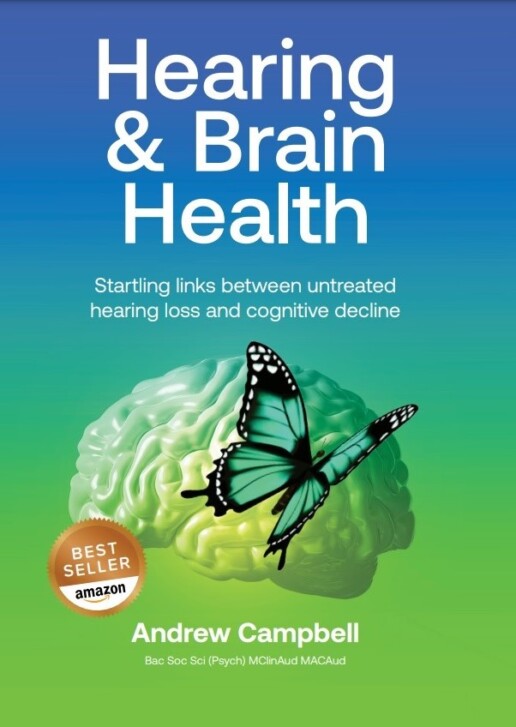MORE
What I’m Often Asked
1. What is involved in a Hearing Assessment?
Hearing Assessments are straightforward and simple. But most importantly, that are painless, non-invasive and easier than most people realise. With that in mind, let’s take a closer look at what to expect.
Collecting Your Hearing History
I’ll take a brief hearing history looking at what may be behind potential hearing loss and the impact this may be having on your lifestyle and relationships.
A Physical Exam of the Ear
I’ll inspect the ear canal with a light called an otoscope. This is to check for physical problems that block the passage of sounds, such as earwax buildup or polyps.
Hearing Assessments
I’ll then assess your hearing in a variety of ways. These different tests all give valuable information about different aspects of your hearing. This helps me narrow down and identify the root cause of any issues. This localisation is important because hearing is a complex process that involves air vibrations (sound) being changed into mechanical energy inside the middle ear, then electrical energy in the inner ear, and finally nerve impulses sent to the brain.
The types of hearing tests include:
Pure-tone audiometry: For this test, a variety of sounds of different pitches and volumes are played into headphones. You press a button each time you hear the sound. This allows me to chart what you can and can’t hear.
Speech recognition: Speech recognition tests your ability to distinguish speech, but without the presence of visual clues like lip movements or facial expressions. During this test you are played speech through the headphones. Many patients are asked to listen to speech against background noise which can be an important test when hearing loss has been untreated for some time.
Bone conduction assessment: This painless test measures how well sound conducted through your bone is detected by the inner ear. It also tests the efficiency of the latter plus the hearing nerves. The test simply involves a small vibrating probe being placed against your skull, just behind the ear.
Whilst the list of assessments may seem overwhelming, they each play an important role in diagnosing hearing loss and the impact it may be having on your life.
If we do indeed find there’s weakness in your hearing ability, we may conduct hearing device demonstration and possibly a hearing device fitting. For this purpose, it can be exceptionally helpful if you are able to attend your appointment with someone that has a familiar voice. As there can be quite a bit to take in, many of our patients tell us they find it useful to have another ‘set of ears’ at the appointment.
2. Are you an Independent Audiologist?
Yes! I wouldn’t have it any other way.
Most attendees at my live seminars are shocked to learn that most hearing aid practices in Australia are owned by foreign hearing aid manufacturers. What this means is that they are only able to recommend to you the devices that their company makes. In most cases, this is not necessarily a ‘bad’ thing as all major manufacturers tend to have solutions that are adequate. In my experience, however, no one manufacturer has the best solution for every hearing loss and every patient. Even when they do have the best solution for a particular person’s situation, another manufacturer may come out with a more advanced solution six months later.
Independent Audiologists are able to choose from whichever manufacturer they see fit. There are six major manufacturers that tend to wax and wane in quality and effectiveness, often due to their Research & Development cycles. I would recommend that whoever you see for your hearing needs, ensure they work with at least three brands; that way, chances are heightened that you’ll be recommended the right solution now and in the future. If your chosen hearing health care provider has a limited range, I recommend that you be 100% satisfied in the solution before making a commitment.
3. Why do I need to wear my hearing devices full time?
Hands down, the best piece of advice I can give any hearing aid owner is that their devices need to be worn full time, meaning at least 12-16 hours per day or all waking hours. Ask anyone that has had their hearing treated at my practice and they’ll tell you that I’m fanatical (in the nicest possible way) about full time hearing aid use, it’s really, really important!
Apart from bathing, swimming and sleeping, the more your devices are in, the more beneficial they’ll be in the immediate and long term. Yet, a surprisingly high number of Australians that own hearing aids don’t wear them adequately.
In the absence of encouragement for full time use, insufficient acclimatisation or if the devices are uncomfortable; too often hearing aids are left in the top drawer or treated like ‘reading glasses’ and put on only for conversation. Our sense of hearing is completely different to vision, the full benefits and value can only be experienced with full time use. For instance, reading glasses can assist with short sightedness which is an inability to appropriately focus at the eye level. The ability to focus on what you want to hear occurs at the level of the brain, not at the ear. Wearing hearing devices on a part time basis creates confusion because it is challenging for the brain to learn to focus at varying volume levels.
Another benefit of full time use that is attracting recent research attention is the reduced risk of falls that occurs when hearing loss is treated. Untreated hearing loss has been shown to result in a 300% increased risk of falls for 40-69 year olds, even at mild levels. Researchers have cited two main reasons for this, the first being environmental awareness. With untreated hearing loss, you’re less likely to hear that thing you’re about to trip on, that step you may miss or that bike or scooter whizzing past when you’re out for a walk. The second reason they cite is the sheer mental resources taken to compensate for hearing loss leaves less attention for steadiness and balance.
Falls account for 25% of all hospital admissions, and 40% of all nursing home admissions 40% of those admitted do not return to independent living; 25% pass away within a year. As alarming as these statics are, they are an underestimate as many falls go unreported. Separate to this, a major cause of falls in the elderly is when they get up to answer the phone. Some of the latest hearing aids integrate to cell phones and are handsfree which could help prevent that happening. Falls can happen at any time; full time hearing aid use essentially nullifies the increased risk that comes with hearing loss.
When you think about it, you can’t turn your natural hearing levels on and or up and down. If you, or someone you care about owns hearing devices, know that 12-16 hours per day is critical to success and to maximise the value of these modern marvels.
What Our Patients Say
I had been to a well-known audio clinic that offered free hearing tests and results showed I needed hearing aids. None of the in-ear canal aids they offered were suitable for me as they caused pain. I didn’t want to wear the bulky external aids so I shelved the whole idea as it seemed too difficult. Andrew, as an independent audiologist is free to prescribe whatever he thinks is suitable. The whole experience has been a revelation! He recommended neat, discreet hearing aids. They have been life-enhancing from the start and without one instance of pain. They even cost slightly less than the ugly type the other company had suggested.
Gary James, Mt Nebo, Brisbane
The tinnitus I had tried to ignore for 20 years had increased to a very disturbing pitch! I couldn’t imagine enduring this new excessive discomfort but believed I had no choice. At my first appointment with Andrew, I was devastated at the thought of wearing anything permanently in both ears. Andrew explained his method so thoroughly that I took his advice with confidence and decided to proceed with tiny devices that are comfortable and discreet. The loud ringing reduced within a few days. I’m hearing effortlessly in challenging situations and can’t wait to fit them as soon as I wake up each morning.
Judith Cush, New Farm, Brisbane
"I’d been prescribed hearing aids from another company, but I hardly ever wore them because they were too bulky. I finally turned to Andrew at Neuaudio and haven’t looked back. At my appointment, he took me outside to the busy road and I burst into tears because I could hear the traffic and knew I could hear properly again! Nothing is ever too much trouble for Andrew. I think everyone in their 60s and 70s should go along to Neuaudio and get their hearing tested compulsorily. "
Helen Day, Brisbane
I was very grateful for the care and concern shown with my particular hearing problems. The changes made with my hearing aids made them so much more comfortable, therefore enabling me to make a great deal more use of them! … best experience I have had with my hearing aids.
Mary O’Connell
my book is out now
Learn about the most effective shortcuts to better hearing and a better life that may reduce your risk of dementia.
Find MY PRACTICES

